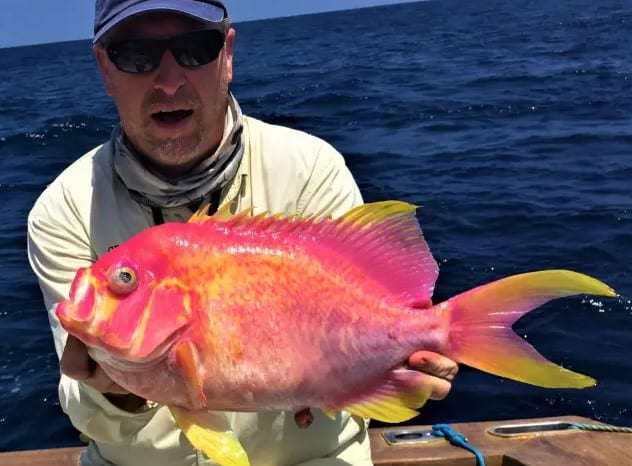Can a single fish justify 19,000 miles of flying? In my case, probably. But it would need to be a really, really weird fish. And any of you who have met me know that my standards for weirdness are extremely high. Just look at Cousin Chuck.

Thursday brought a change of boats and guide. Kenya had given me seven new species and four records so far, and while this was certainly solid, I knew there were a lot more fish out there. Every great trip needs a “signature fish,” and this hadn’t happened yet. Still, I slept well Wednesday night. Maybe it was the confidence of knowing I was heading out with a bottom fishing specialist or the Scotch and Ambien.

Either way, Captain Calvin du Plessis believed we could find some weird stuff on the deep reefs, and it seemed like he enjoyed the challenge. We had traded numerous texts and calls, and I didn’t need a Red Bull to get wound up in the morning, although I drank a couple to make sure.

These fish are actually close relatives of groupers and are placed by taxonomists in the subfamily Anthiinae, a group of relatively small, colorful fishes known as fairy basslets, within the family Serranidae. Gorgeous swallowtails are the largest of the fairy basslets, growing to more than 16 inches long (to the tail fork, so excluding the spectacularly long, slender lobes of the caudal fin).
 This species is known to occur only in the Indian Ocean, along the coasts of South Africa, Mozambique, Kenya, Seychelles, and Reunion Island, and as far east as the Andaman Sea near Thailand. They frequent deep reefs, usually between depths of 250 to 600 feet, so compared to other captures, this fish was taken in relatively shallow water. Like other serranids, gorgeous swallowtails are a predatory species, feeding mainly on other fishes. Given that some skippers in the Seychelles report seeing only one or two gorgeous swallowtails throughout their whole career, you and your dad certainly had luck on your side that day.
This species is known to occur only in the Indian Ocean, along the coasts of South Africa, Mozambique, Kenya, Seychelles, and Reunion Island, and as far east as the Andaman Sea near Thailand. They frequent deep reefs, usually between depths of 250 to 600 feet, so compared to other captures, this fish was taken in relatively shallow water. Like other serranids, gorgeous swallowtails are a predatory species, feeding mainly on other fishes. Given that some skippers in the Seychelles report seeing only one or two gorgeous swallowtails throughout their whole career, you and your dad certainly had luck on your side that day.
